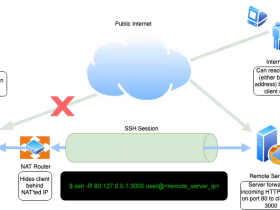- A+
1.简介
jq 是一款非常强大的 JSON 命令行处理工具。其官网地址为:https://stedolan.github.io/jq/
2.安装
以CentOS为例:
1.在线安装
yum install -y epel-release && yum install -y jq 2.离线安装
- 访问官网,并下载jq(Linux 64-bit)
- 在Linux中执行命令
mv -f /home/surpass/jq-linux64 /usr/bin/jq 3.验证安装
# jq -h Some of the options include: -c compact instead of pretty-printed output; -n use `null` as the single input value; -e set the exit status code based on the output; -s read (slurp) all inputs into an array; apply filter to it; -r output raw strings, not JSON texts; -R read raw strings, not JSON texts; -C colorize JSON; -M monochrome (don't colorize JSON); -S sort keys of objects on output; --tab use tabs for indentation; --arg a v set variable $a to value <v>; --argjson a v set variable $a to JSON value <v>; --slurpfile a f set variable $a to an array of JSON texts read from <f>; --rawfile a f set variable $a to a string consisting of the contents of <f>; --args remaining arguments are string arguments, not files; --jsonargs remaining arguments are JSON arguments, not files; -- terminates argument processing; 3.常用参数
- -h/--help
输出jq帮助信息
- -V/--version
输出jq版本信息
- -c/--compact-output
将每个JSON对象在单行内以紧凑的形式输出
- -n/--null-input
不读取任何输入,将null做为输入运行一次
- -r/--raw-output
在开启这个选项的情况下,如果 过滤器 的结果是 string,就会直接写入标准输出而不是以 JSON string 的格式输出。这在 jq 过滤器和其他处理 非-JSON 系统交互时比较有用。
- -R/--raw-input
不要将输入解析为JSON。相反,每行文本都以字符串形式传递给过滤器
- -C/--color-output和-M/--monochrome-output
默认情况下,如果是写入到终端,jq 会输出 colored JSON 。也可以使用 -C 强制输出彩色的JSON 到管道或者文件。也可以使用 -M 禁掉输出 colored JSON 。
- -S/--sort-keys
将每个 JSON object 的各个字段按照 key 排序的顺序输出
- --tab
使用tab符做为缩进符
- --indent n
指定缩进使用的空格数,范围为[-1,7]
4.基本过滤器
在使用过滤器前,先来看看一个示例数据,如下所示:
{ "personInfo": { "name": "Surpass", "age": 28, "location": "shanghai" }, "others": [ "a", "b", "c" ] } - 1、.
最简单也是最平常的过滤器,其作用是接收输入并原样输出的过滤器
cat test.json | jq . { "personInfo": { "name": "Surpass", "age": 28, "location": "shanghai" }, "others": [ "a", "b", "c" ] } - 2、.key 或 .key.key 或 '.["key"]'
获取指定key的值,如果没有找到指定的key,则输出null
# cat test.json | jq .personInfo { "name": "Surpass", "age": 28, "location": "shanghai" } # cat test.json | jq .personInfo.name "Surpass" # cat test.json | jq '.["personInfo"]' { "name": "Surpass", "age": 28, "location": "shanghai" } # cat test.json | jq .abc null - 3、.key?
使用 .key 时,当 . 不是一个数组或对象时会而报错,使用 .key? 则不会报错
# echo "1" | jq .a jq: error (at <stdin>:1): Cannot index number with string "a" # echo "1" | jq .a? # - 4、.[index] 或 .[startIndex:endIndex]
获取对象或value为数组或字符串的子数组或子符串。索引主要有以下几种形式
- 索引下标从0开始,
- 支持负索引,-1表示最后一个元素,-2表示倒数第二个元素
# cat test.json | jq .others[0] "a" # cat test.json | jq .others[1:3] [ "b", "c" ] # cat test.json | jq .others[-3:-1] [ "a", "b" ] # cat test.json | jq .others[:3] [ "a", "b", "c" ] # echo '[{"name":"Surpass","age":28},{"oters":1234}]' | jq .[0] { "name": "Surpass", "age": 28 } # echo '["Surpass"]' | jq .[0][0:3] "Sur" - 5、.[]
获取所有的value值
# cat test.json | jq .[] { "name": "Surpass", "age": 28, "location": "shanghai" } [ "a", "b", "c" ] - 6、keys
获取所有的key对象
# cat test.json | jq keys [ "others", "personInfo" ] - 7、[.[]]
获取所有value组成的数组
cat test.json | jq [.[]] [ { "name": "Surpass", "age": 28, "location": "shanghai" }, [ "a", "b", "c" ] ] - 8、.[].key
获取数组元素中指定key的所有值
# echo '[{"name":"Surpass"},{"name":"Kevin"},{"name":"Tina"}]' | jq .[].name "Surpass" "Kevin" "Tina" 如果需要将输出结果再次组装为数组,可以这样使用 [.[].key]
- 9、,
使用多个筛选条件
# cat test.json | jq .personInfo | jq [.name,.age] [ "Surpass", 28 ] - 10、管道
可以通过 | 实现管道功能,从而达到对处理的结果进行二次或多次处理
# cat test.json | jq '.personInfo|.name,.age' "Surpass" 28 # cat test.json | jq '.others|.[2]' "c" 也可以使用Linux自带的 | 实现同样的功能。
- 11、length
length 可以获取字符串或数组的长度
# cat test.json | jq '.others|length' 3 # cat test.json | jq '.personInfo|length' 3 # cat test.json | jq '.personInfo|.name|length' 7 - 12、map
可以实现对数组的每一项操作,然后进行合并结果。
# echo '["Surpass","Kevin","Tina"]' | jq 'map(length)' [ 7, 5, 4 ] - 13、filter(select)
可以实现对输入项进行判断,然后仅返回符合条件的项
# echo '["Surpass","Kevin","Tina"]' | jq 'map(select(.|length>5))' [ "Surpass" ] # echo '["Surpass","Kevin","Tina"]' | jq 'map(select(.|length>=5))' [ "Surpass", "Kevin" ] - 14、()
可以实现字符串插值功能
# cat test.json | jq '"Hello (.personInfo|.name)"' "Hello Surpass" # echo '{"name":"Surpass","age":28}' | jq '"age is: (.age)"' "age is: 28" - 15、+
可以实现字符串拼接功能
# echo '{"name":"Surpass","age":28}' | jq '"name is :" + .name' "name is :Surpass" cat test.json | jq '"name is :" + .personInfo.name ' "name is :Surpass" - 16、if/elif/else
可以使用 if .. then .. elif .. then .. else .. end 实现条件判断
# echo '[0, 1, 2, 3]' > | jq 'map(if . == 0 then "zero" elif . == 1 then "one" elif . == 2 then "two" else "many" end)' [ "zero", "one", "two", "many" ] - 17、构造 object 或数组
可以通过 {} 和 [] 构造新的 object 或 数组
- object:
# echo '["Surpass","Kevin","Tina"]' | jq '{name:.[0]}' { "name": "Surpass" } # echo '{"name":"Surpass","ages":[28,29,30]}' | jq '{name,age: .ages[]}' { "name": "Surpass", "age": 28 } { "name": "Surpass", "age": 29 } { "name": "Surpass", "age": 30 } - array
# echo '{"name":"Surpass","age":28,"location":"Shanghai"}' | jq '[.name,.age,.location]' [ "Surpass", 28, "Shanghai" ] - 18、join
可以进行数组拼接功能。
# echo '["Surpass","28","Shanghai"]' | jq '.|join("--")' "Surpass--28--Shanghai" - 19、split
可对字符串进行拆分
# echo '"Surpass--28--Shanghai"' | jq 'split("--")' [ "Surpass", "28", "Shanghai" ] 原文地址:https://www.jianshu.com/p/2f58c975b9ca
本文同步在微信订阅号上发布,如各位小伙伴们喜欢我的文章,也可以关注我的微信订阅号:woaitest,或扫描下面的二维码添加关注:





